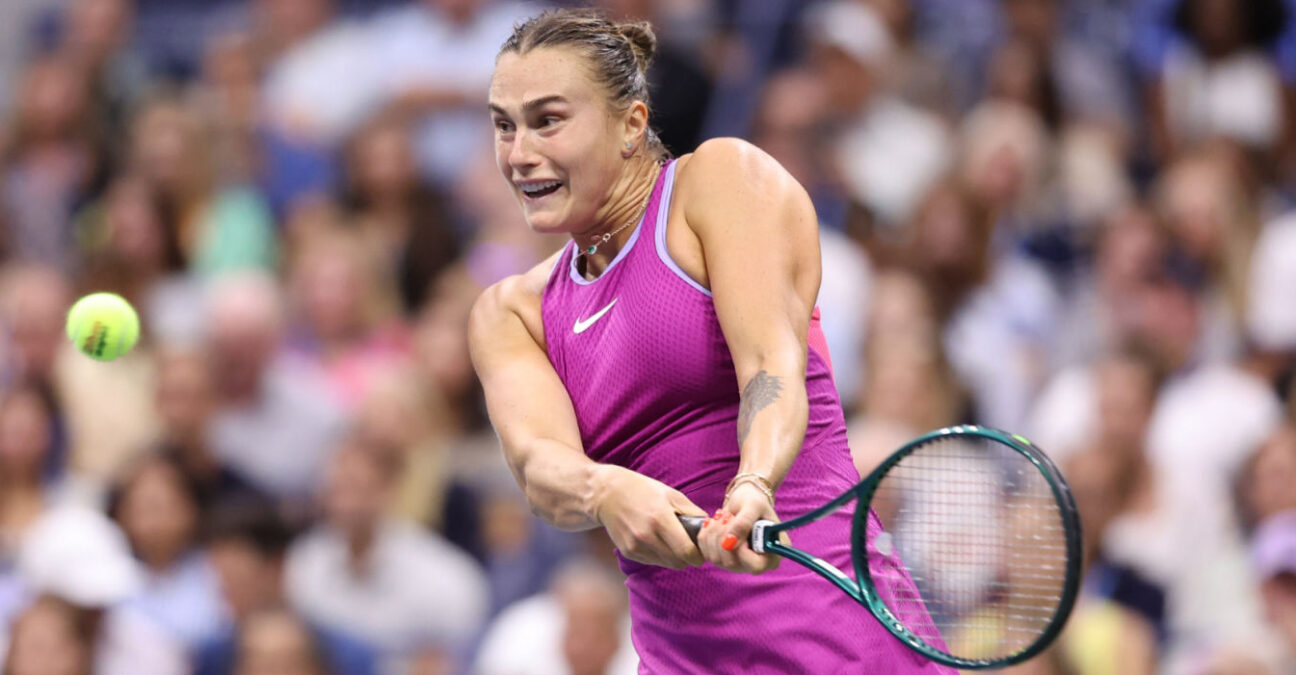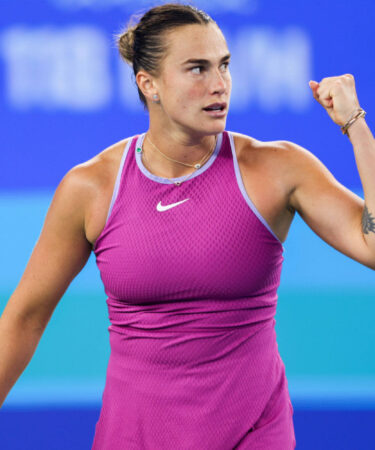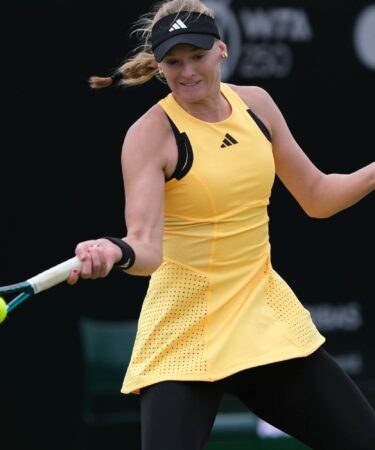Greater “control over emotions” key to Sabalenka’s tour-leading form
The Belarusian in enjoying a stellar run of form, and is now within striking distance of the world No 1 ranking
 (Antoine Couvercelle / Panoramic)
(Antoine Couvercelle / Panoramic)
Aryna Sabalenka is just two wins short of breaking a career-best record.
Should the world No 2 come through her next two matches in Beijing this week, she will reach a 16-match winning streak, beating the run of 15 consecutive victories she set between Ostrava 2020 and Abu Dhabi in 2021.
Remarkably, Sabalenka has dropped only one set across her current run of 14 straight wins, and not since a quarter-final exit to Amanda Anisimova in Toronto nearly two months ago has anyone been able to prise two sets off her in a match.
The Belarusian tends to perform well across the Asian swing, and particularly so in China.
“I played so many tournaments in China and I played really well in most of them,” Sabalenka told press following her second-round victory over Ashlyn Krueger in Beijing.
“I don’t know, I love playing in China. I love the conditions. I love the crowd. It’s really great atmosphere. It feels like tennis community became bigger here, more people watching us playing. It’s really amazing to see.”
But this current vein of fine form began well before the Asian stretch, encompassing a 1000-level title in Cincinnati, a Grand Slam triumph in New York, and now extending into the latter months of the season.
There is one obvious common denominator – hard-court tennis. Sabalenka is one of the most formidable forces on the WTA Tour on any surface, but her game is most potent throughout the season’s many elongated stretches on hard courts.
This was most evident when Sabalenka completed the rare feat of the Grand Slam hard-court double, with title triumphs at both the Australian and US Opens, as she became only the fifth woman to win both tournaments in the same season since they’ve each been played on hard courts.
Yet, aside from the conditions she enjoys in China and her intimidating prowess on hard courts in general, Sabalenka has also pointed to another aspect of her game that is lending itself to her current tour-leading form.
“I think control over my emotions, that’s the key,” she explained.
“I think the way I’m controlling my emotions and the way I’m holding myself sometimes really helping me to stay in most of the matches, in those difficult situations to keep fighting and keep playing my best tennis.”
This greater level of emotional control when on court is rooted in Sabalenka having coming through her own off-court difficulties earlier this year, and using those painful life experiences to remain grounded when under pressure during a match.
“In the past I had a lot of difficult things to face. After you face certain things, you realize it’s just sport. Okay, if you’re not going to win this match, what happens? Nobody is going to die. You’re not going to die. It’s okay. You’re going to go in another tournament and you’re going to try your best in the next one.
“Before it felt like if I’m not going to win this match, something bad going to happen. I’m going to die, whatever. But these kind of thoughts create all of that pressure, all of that frustration, all of that crazy stuff.
“Nowadays I’m just, you know, working hard, I’m trying to improve myself every day. Every time I’m on the court, I’m trying to give my best. If you give your best, you didn’t win the match, okay.
“You learn and you try better next time.”
sabalenka rapidly closing the gap on iga swiatek
With defending champion Iga Swiatek absent from the China Open this year due to personal reasons, Sabalenka has a golden opportunity to take a huge chunk out of the significant points deficit between herself and the world No 1.
Absent from her title defence, the Pole will have 1000 points falling off her tally next week, with Sabalenka able to climb even closer to Swiatek should she improve upon her own last-eight finish in Beijing from a year ago.
Over the past two months, the Belarusian has re-established herself as Swiatek’s closest rival, and firmly underlined her status as the best hard-court tennis player in the world.
Now, she is once again entering new heights with a genuine opportunity to claim the year-ending No 1 crown – one that was snatched away from her at the last juncture by Swiatek during last season’s WTA Finals.
This time around, however, it is the Pole who is the hunted, and Sabalenka with all the current upward trajectory. That fact, combined with an autumn stretch played entirely on the Belarusian’s favoured hard courts, may tip the balance in favour of the reigning Australian and US Open champion.
While the world No 1 spot would be a huge achievement in its own right, it could also signal a wider shift in the women’s game.
Sabalenka already holds two of the year’s four majors and has been the WTA’s form player since late summer. But should she pip Swiatek to the year-end No 1 ranking, then Sabalenka would head into the 2025 season as the WTA’s best player – the first time time since 2022 that Swiatek has not been the pace-setter.
The broader significance of the Belarusian’s current winning streak has yet to be seen, but when looking back at this period in a couple of months’ time, it may well prove to have been the catalyst for a fundamental change of dynamics in the rivalry between the WTA’s two finest players – one that ultimately sees the top of women’s tennis move into a new chapter.
It is for this reason that we should observe Sabalenka’s current dominance with particular intrigue.




People in this post
More tennis news
Sinner not stressed by CAS ruling on WADA appeal: “I’m very positive of how it’s going to be”

World No 1, Cervara, Russia: Everything you always wanted to know about Daniil Medvedev (but never had time to find out) – updated after 2024 ATP Finals loss

Medvedev reflects on trophyless 2024: “6 and a half out of 10 season”

Players, prize money, dates, tickets: Everything you always wanted to know about the 2024 ATP Finals (but never had time to find out) – updated after Day 5

ATP Finals: Sinner beats Medvedev to knock Russian out of contention, Fritz through





